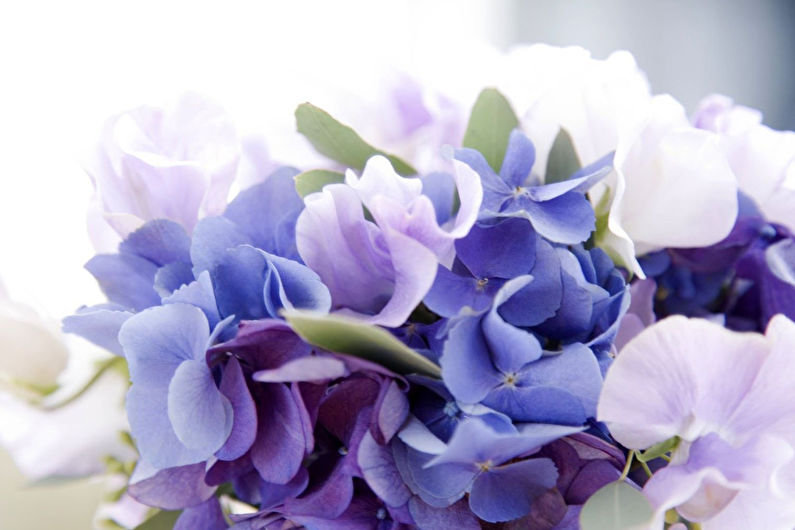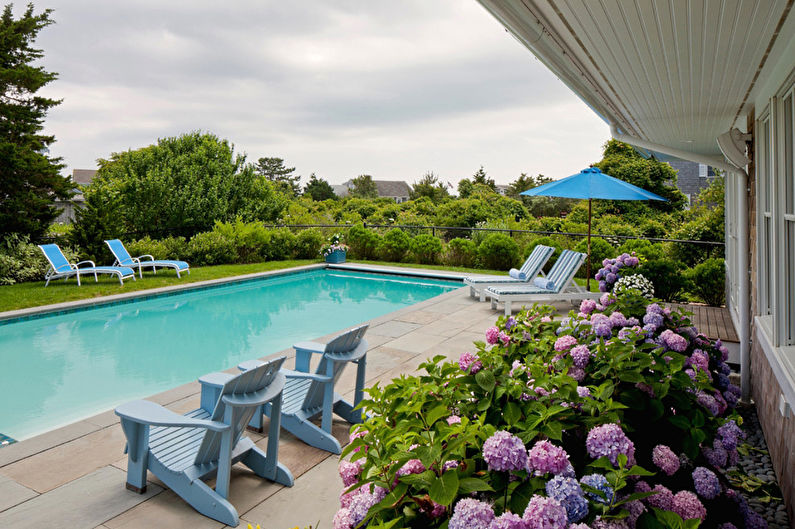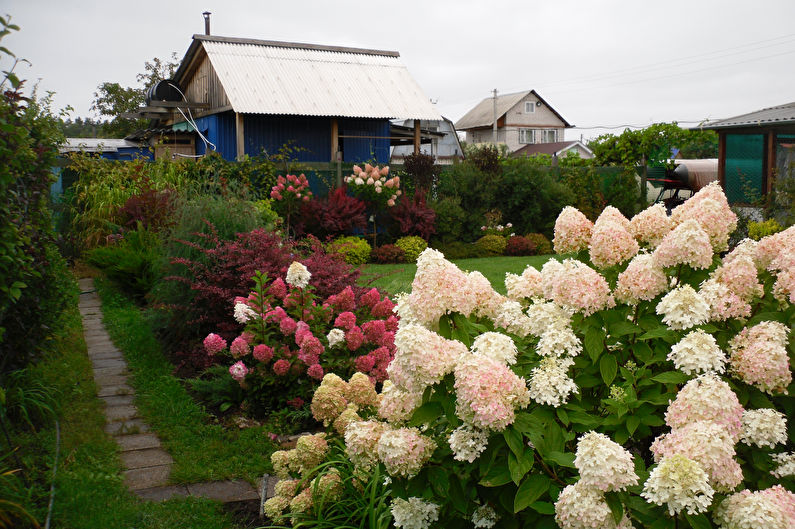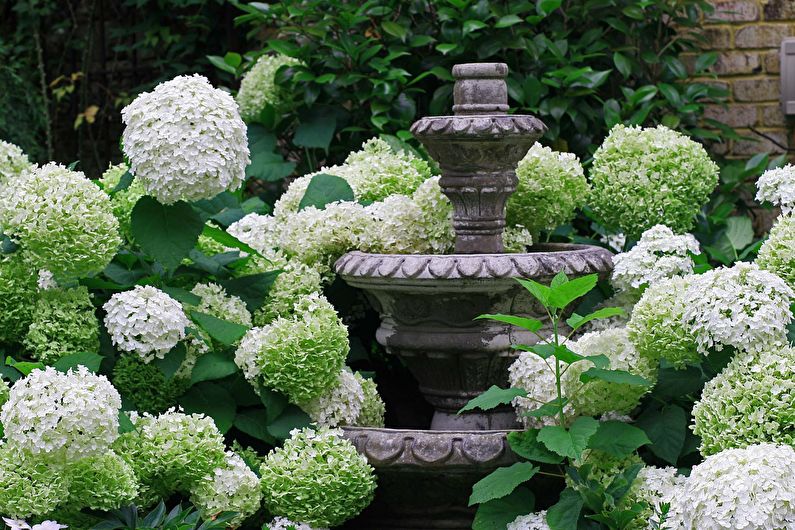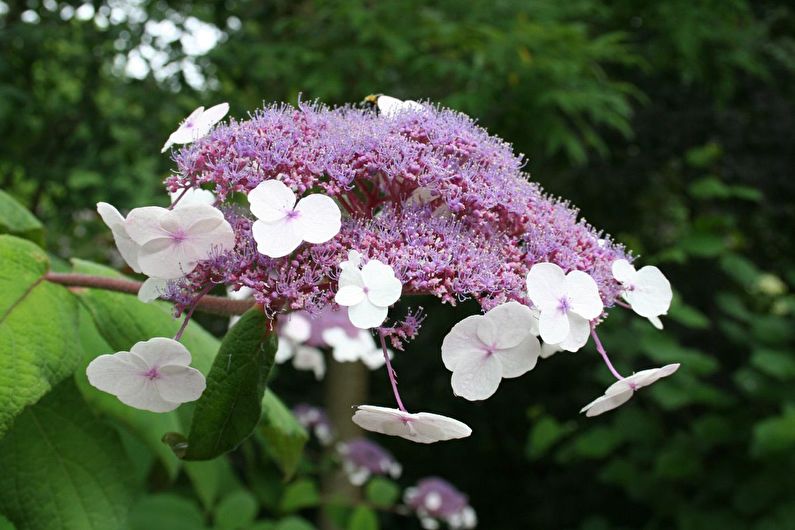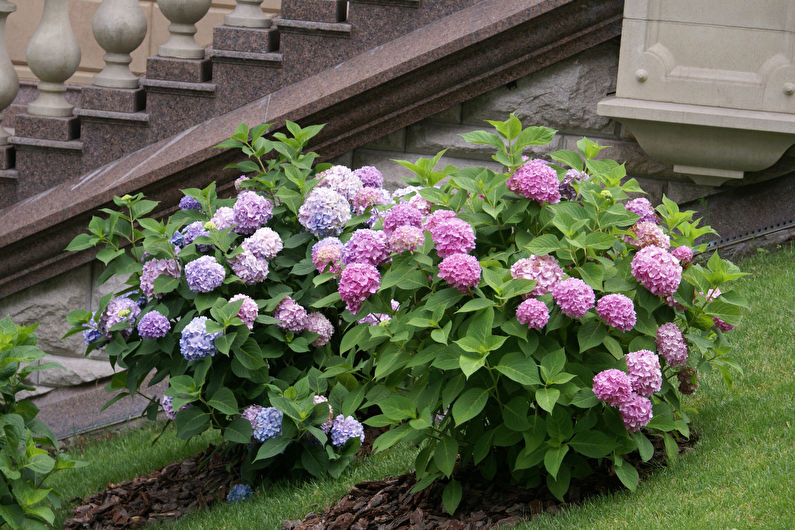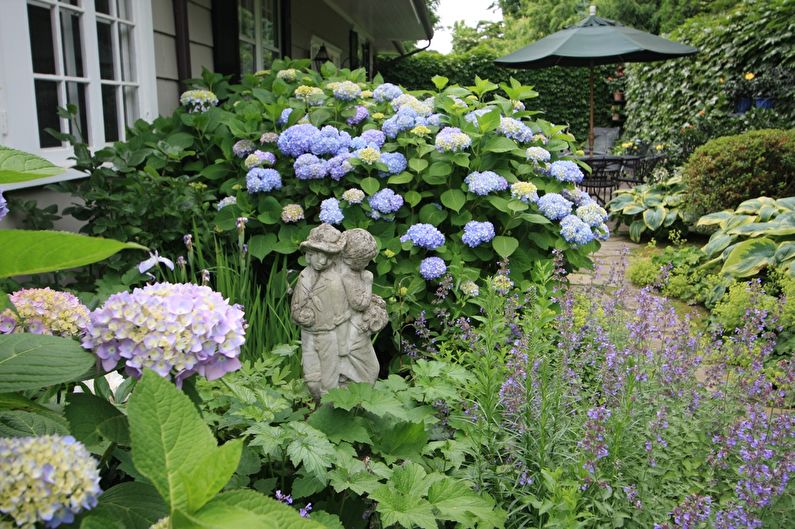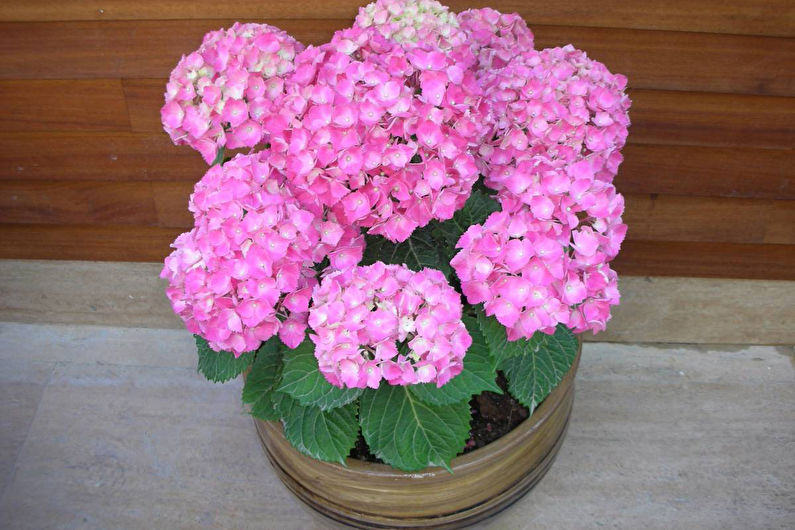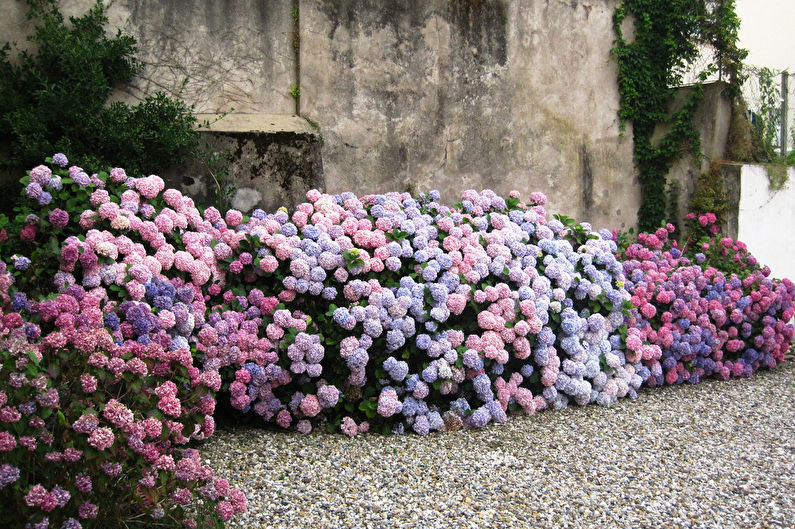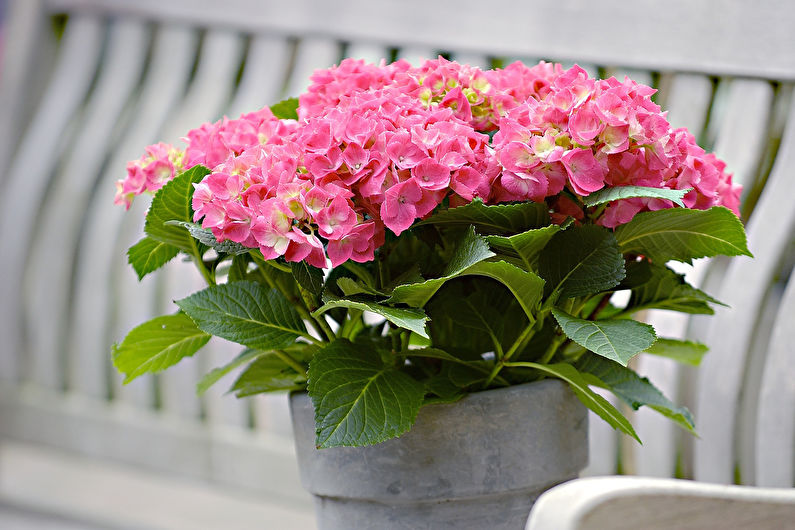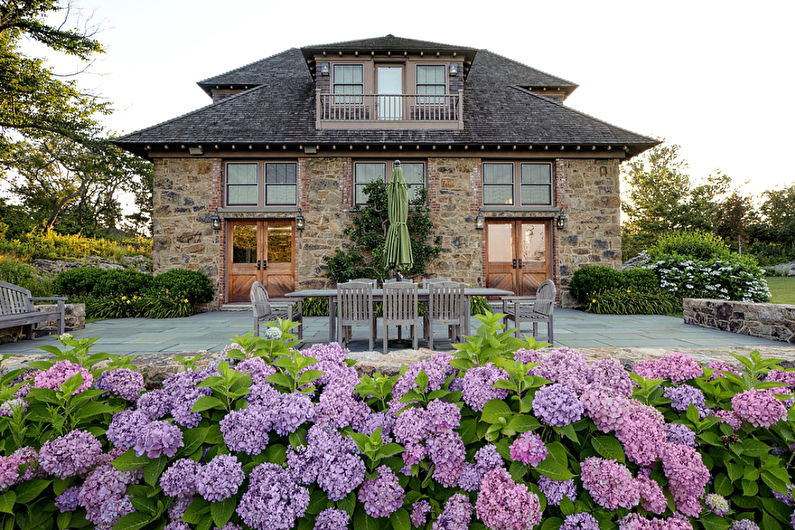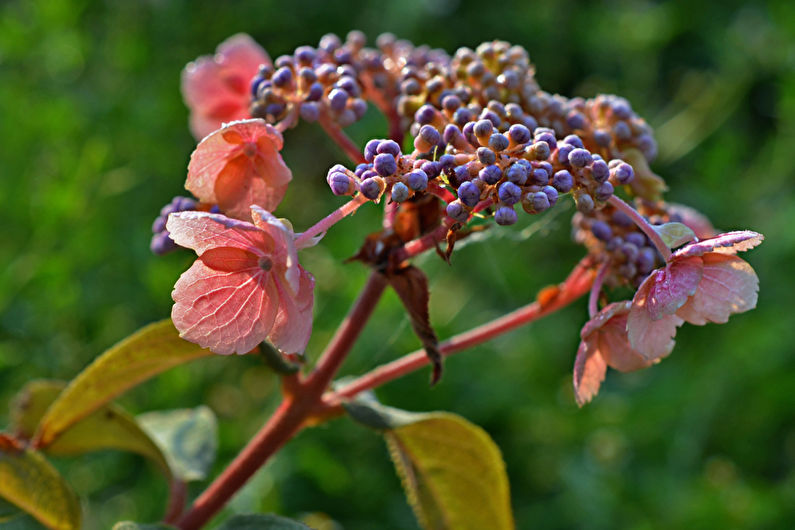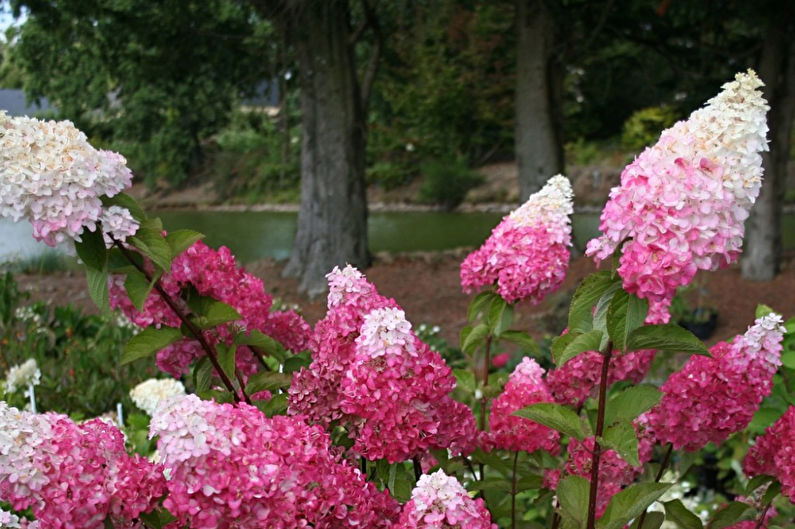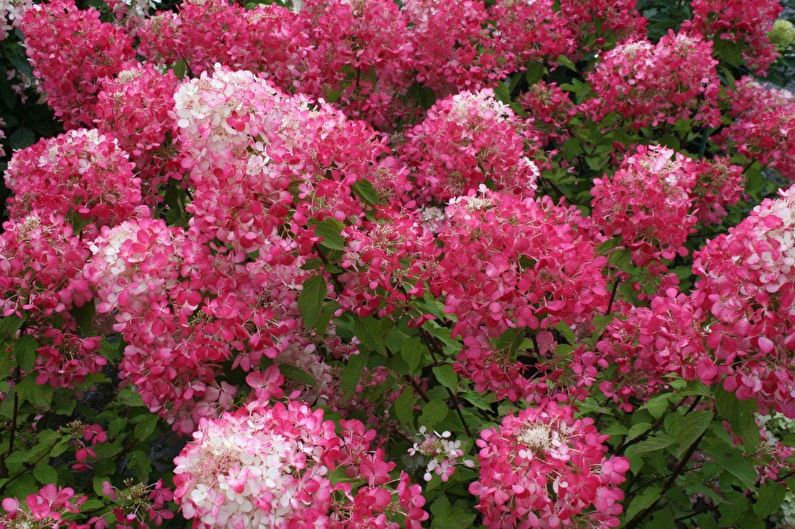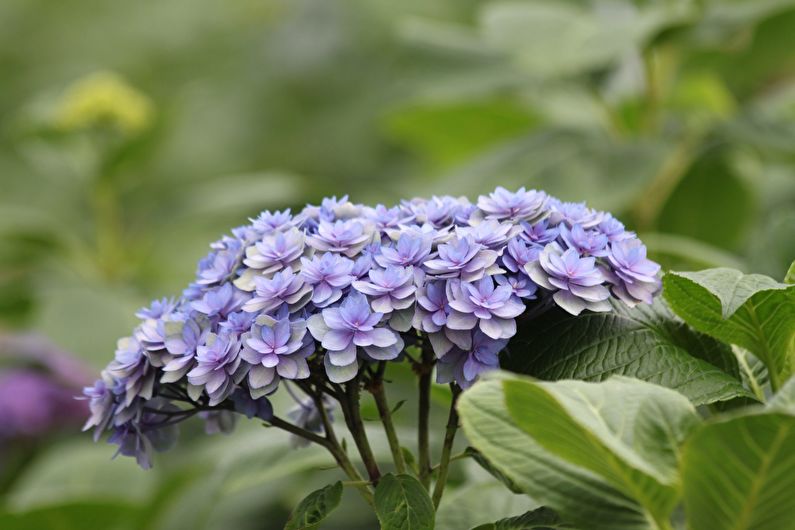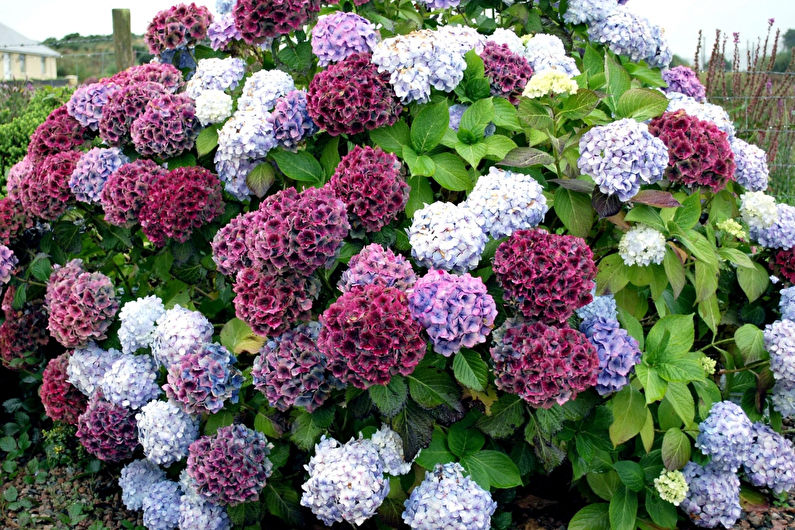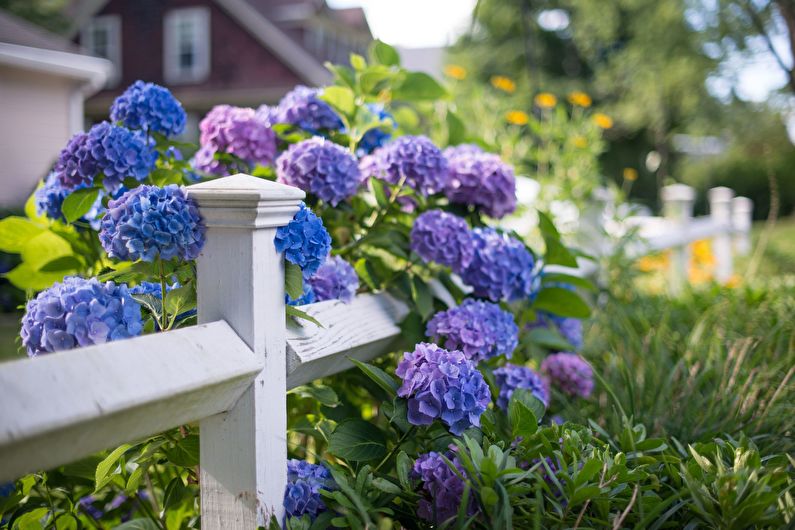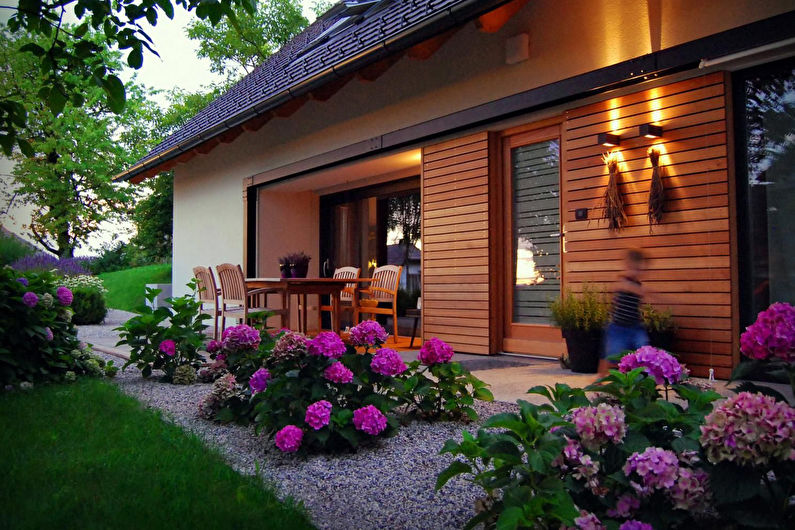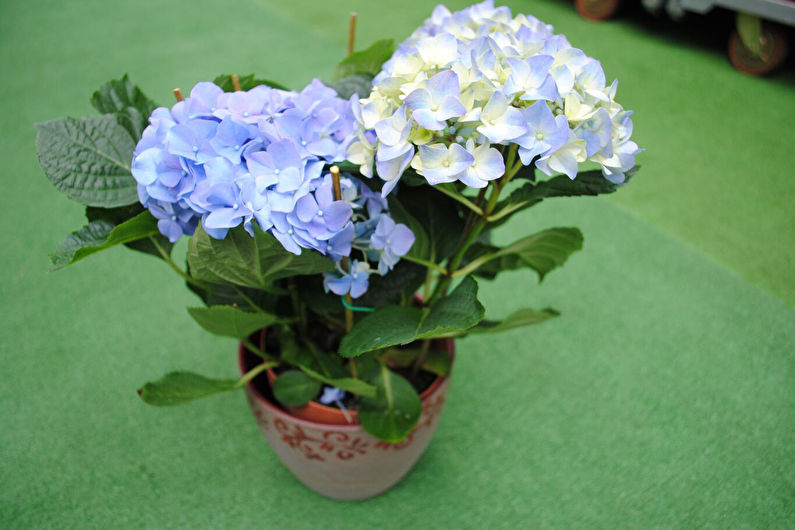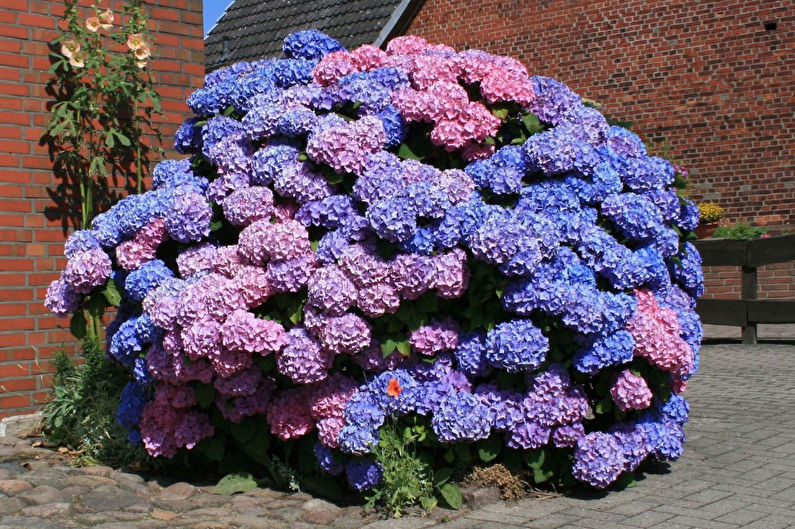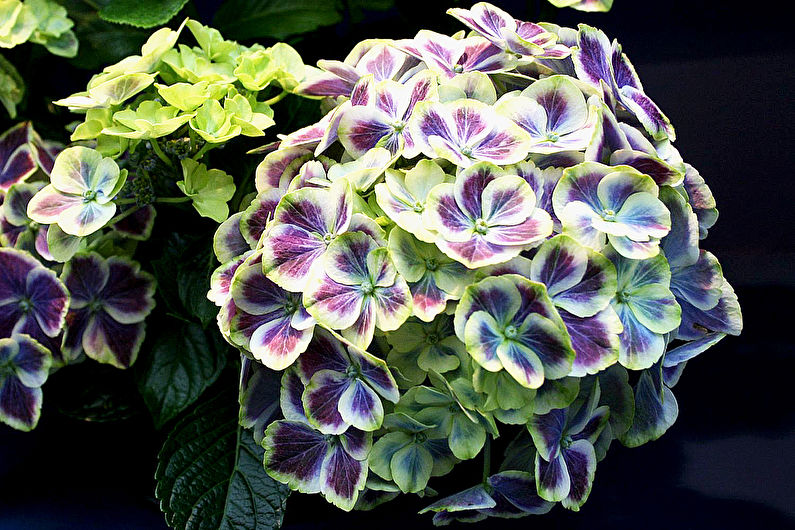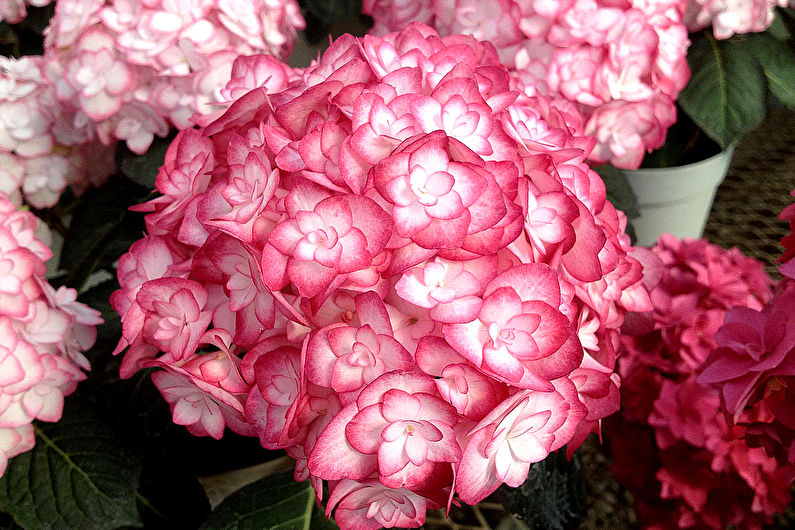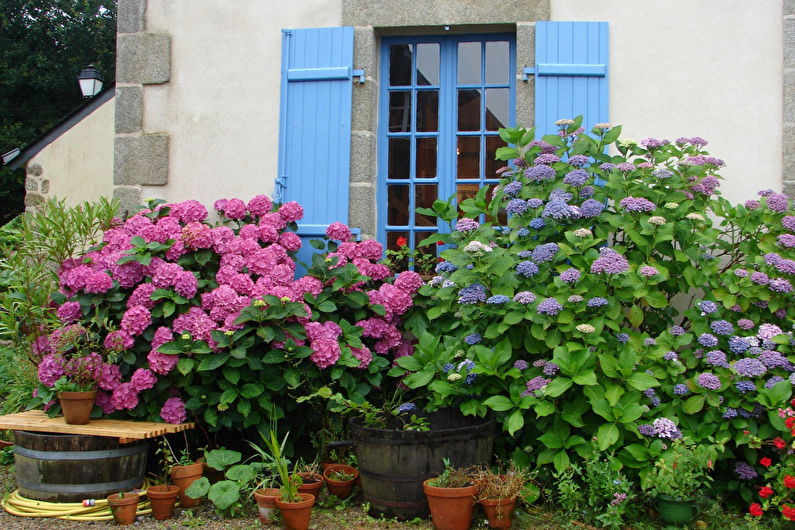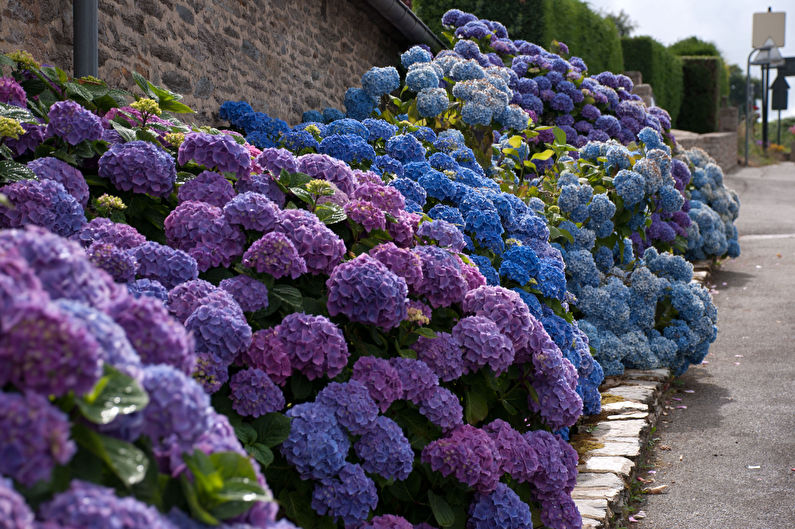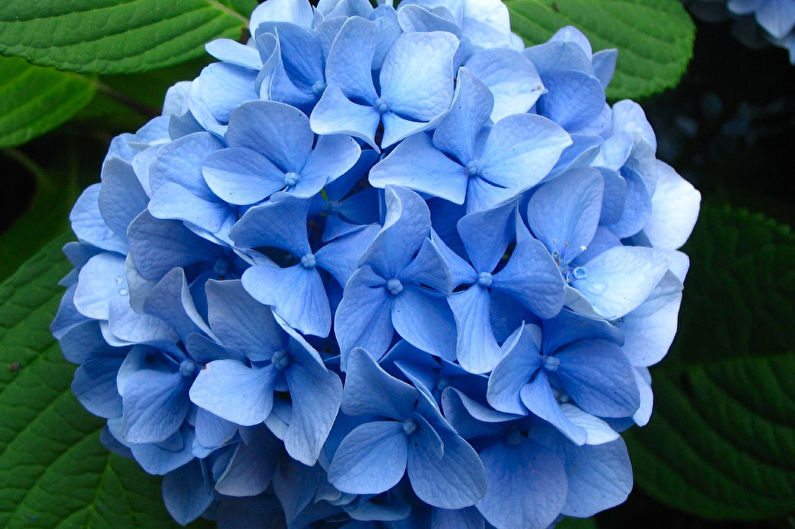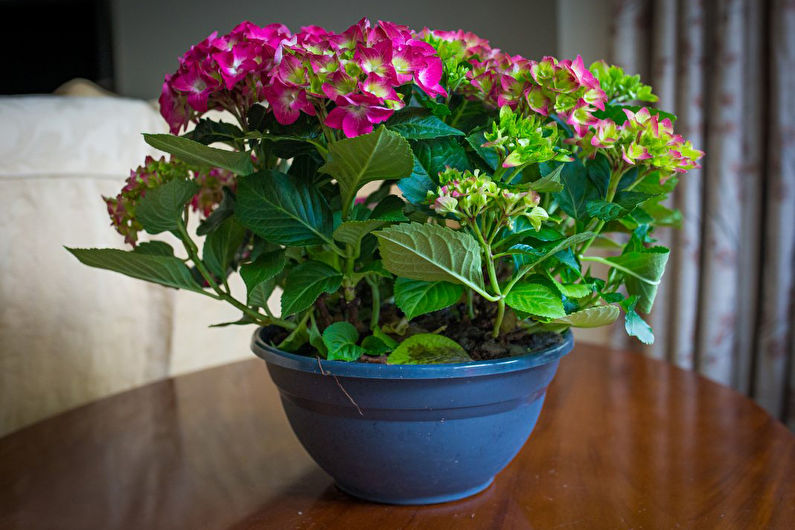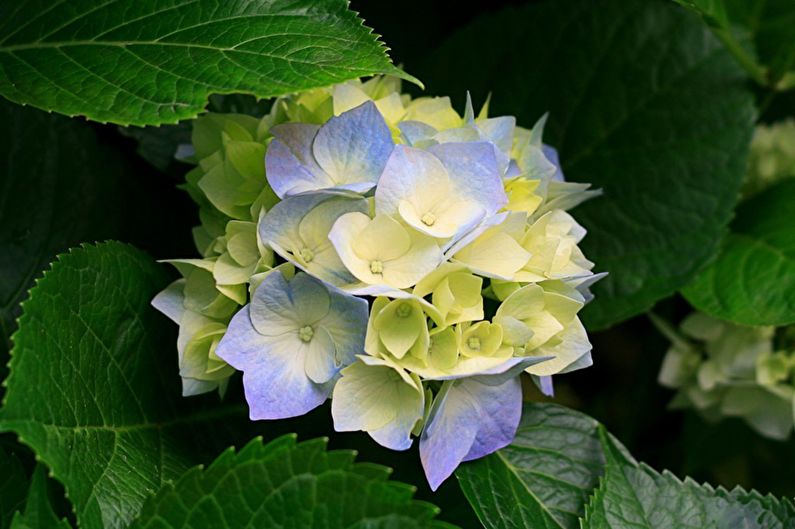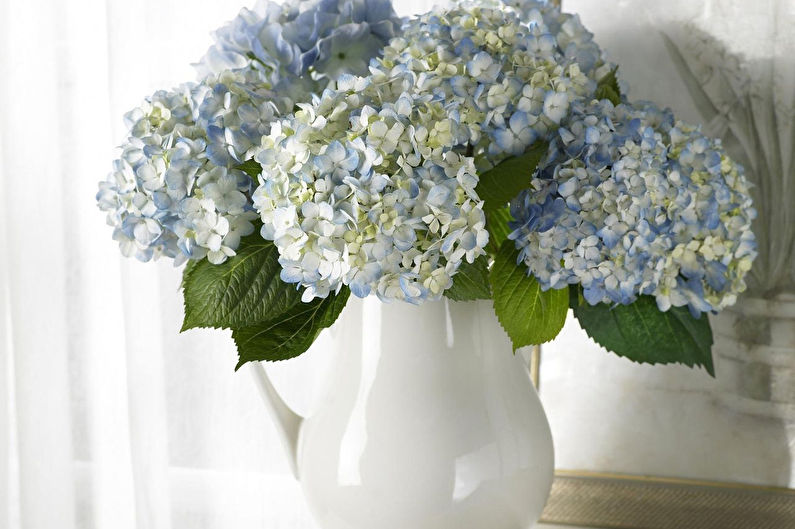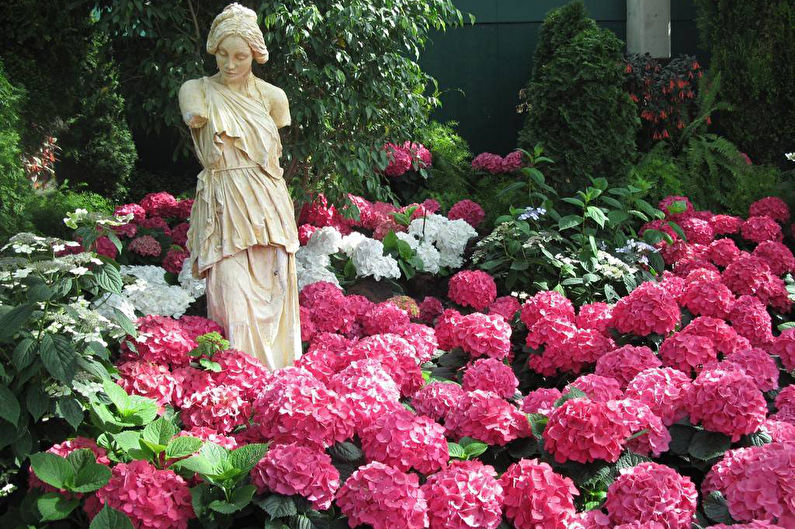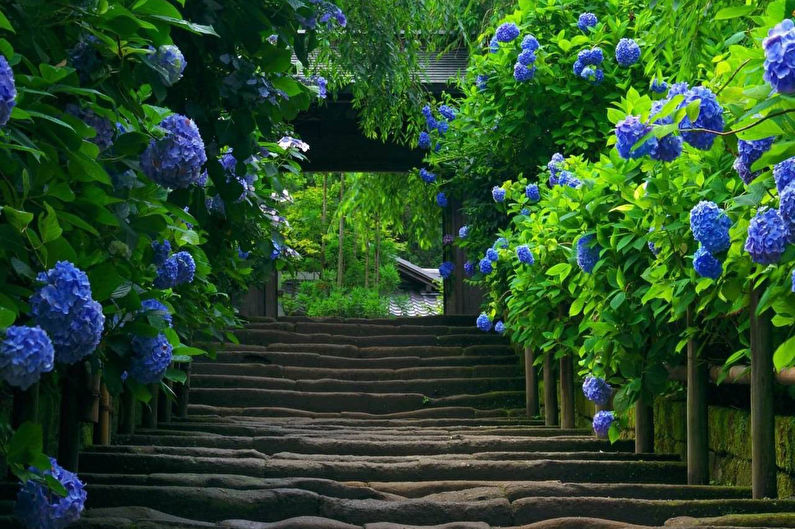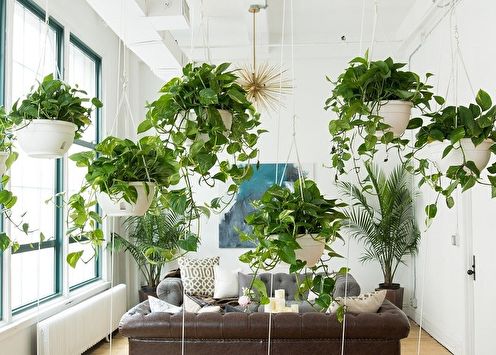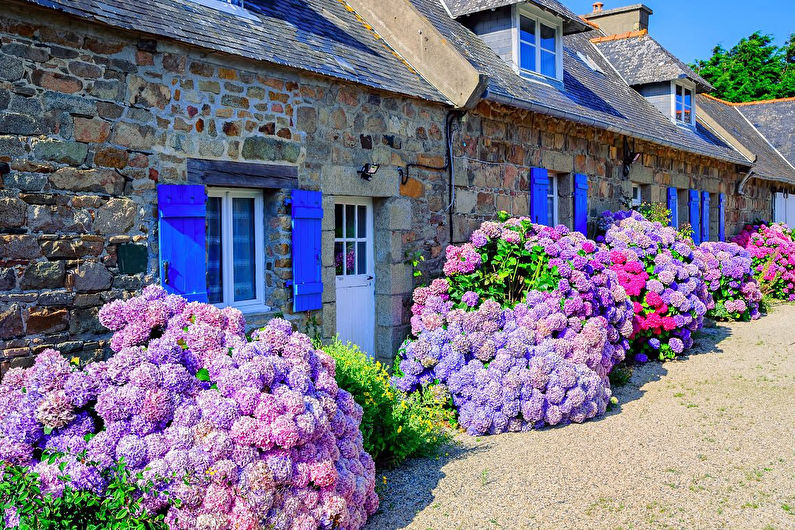
Due to lush colorful inflorescences, as well as relative unpretentiousness to care, hydrangea is highly appreciated by florists around the world. Shrub varieties of this plant look unusually attractive in landscape design, decorating gardens, parks, alleys and flower beds. In turn, room hydrangea harmoniously complements the interior decoration of houses and apartments, it is often used in wedding decor. These flowers can be grown both in the open ground, and on the windowsill or balcony - in any case, their elegant sophistication will delight others throughout the warm season.
Flower features
In the botanical classification, the Hortensiae constitute a separate family of the Tsvetkov family. Most of them are perennial bushes and trees up to 3 meters high, but there are also vines that can curl up to 30 meters in length. Species growing in the subtropics can be evergreen, but the main part belongs to the deciduous group.
Hydrangea blooms last 5-6 months - from late spring to late autumn. On the bush there are many inflorescences of spherical, paniculate or shield form. Most species are characterized by creamy white petals, but depending on the variety of the plant and the chemical composition of the soil, variations are possible from saturated blue, violet, raspberry tones to delicate bluish-pink and pastel yellow overflows. The palette of these flowers seems to reflect all the colors of the sky, which can be observed before sunrise on a clear day.
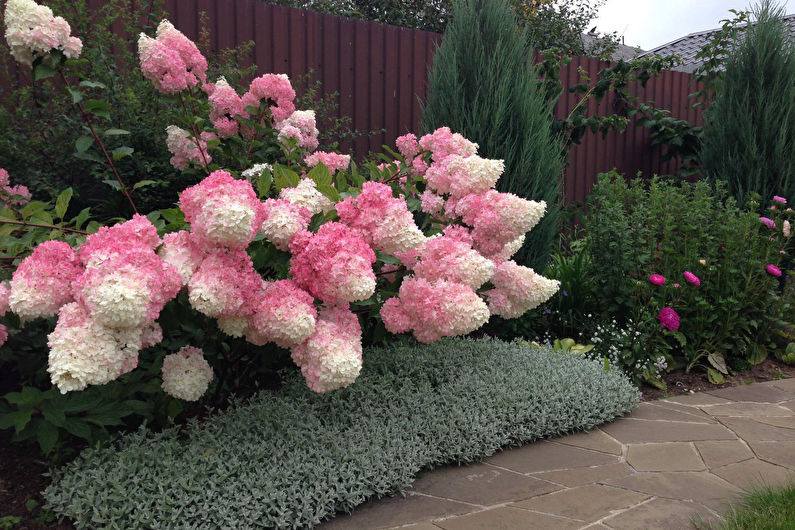
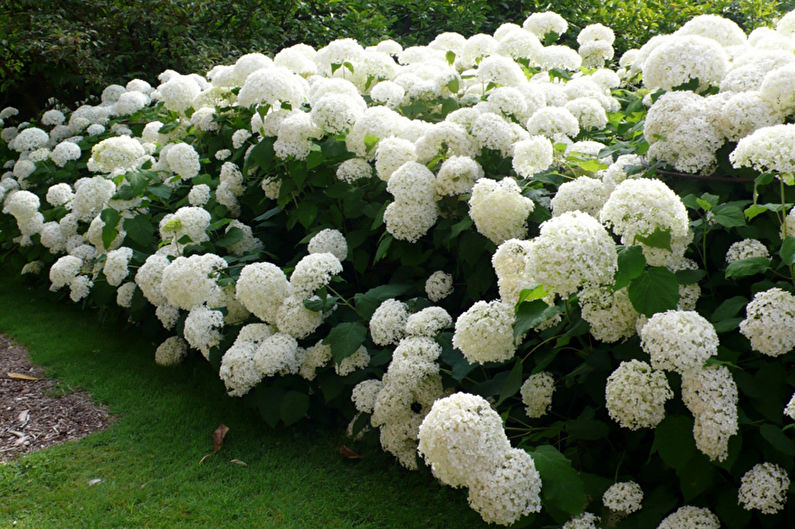
Types of Hydrangea
Despite the fact that the homeland of wild-growing hydrangea is subtropical Japan, as a result of selection, it was possible to adapt it to a more severe climate of the Middle European latitudes. Currently, there are more than a hundred cultivated varieties of this plant. Among them there are several species that tolerate frosts well: hydrangea treelike, petiolate, paniculate, large-leaved. The latter is most often grown indoors, greenhouses, conservatories.
Hydrangea
It is a fairly large bush 1.5-3 m high, with a crown diameter of up to 2-2.5 m. This species attracts general attention with luxurious spherical or pyramidal inflorescences of white, cream, pinkish-lilac, bright blue against a heart-shaped dark green leaves with a serrated edge. Under favorable conditions, many varieties of tree hydrangeas grow for 10-15 years, but at the same time their branches should be pruned regularly, and the soil should be fed with fertilizers.
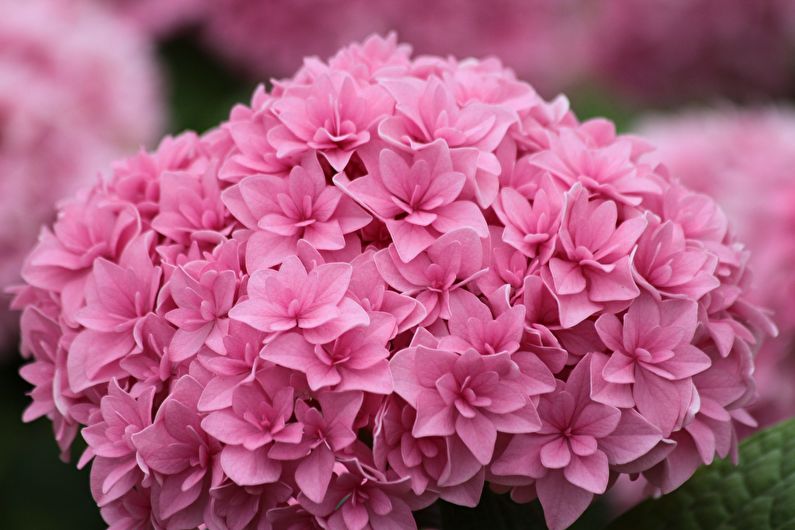
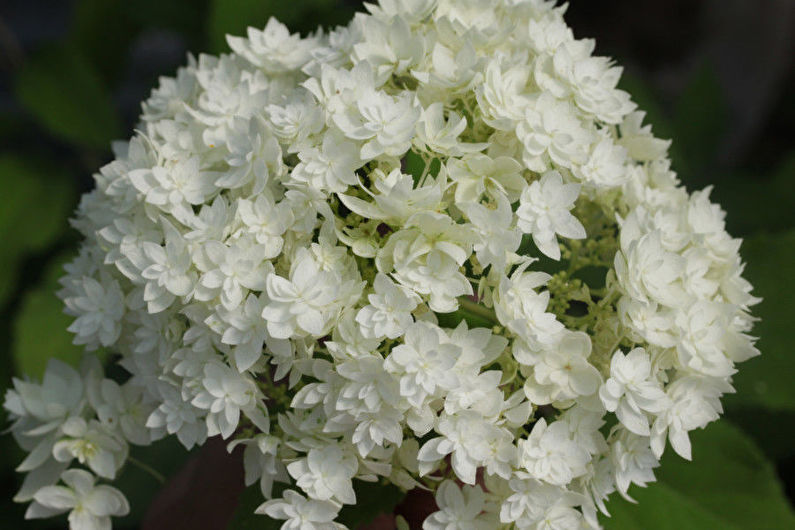
Petiole hydrangea
It belongs to the vines, so it is ideal for vertical gardening. Braided shoots fill any space, whether it be the supports of a gazebo or porch, fences, arches and other similar structures. A petiole species is characterized by a large number of white paniculate or umbrella-shaped inflorescences. The height of the vines can be up to 10-15 m.
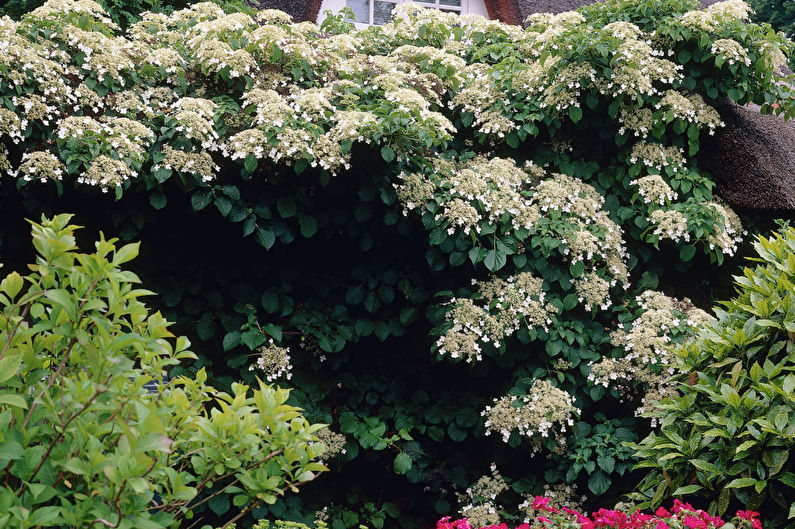
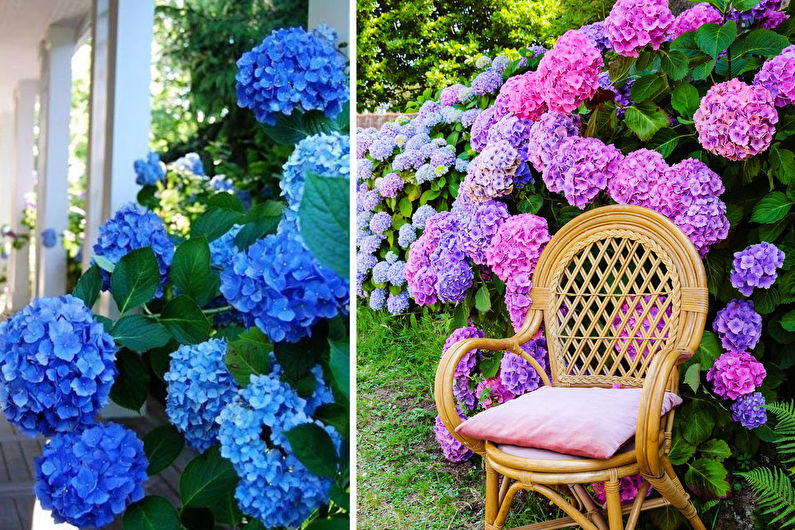
Panicle hydrangea
It is notable for fluffy inflorescences-pyramids resembling lilacs. Their length can vary from 20 to 35 cm. These are mainly white and pink varieties, the main advantage of which is abundant flowering. The stalks of this hydrangea are relatively low - up to 80 cm, so it is usually grown in flower beds.

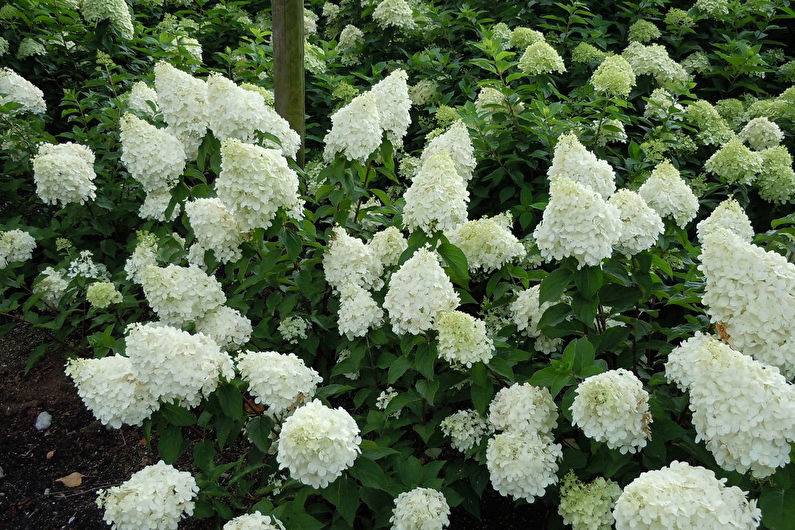
Leaf hydrangea
The brightest and most colorful group of all. Saturated violet, purple, cornflower blue, lime-yellow hues are often mixed together even on one inflorescence-ball, not to mention the proximity of several multi-colored bushes. There are also reduced, indoor varieties of large-leaf hydrangea.Their main advantage is compactness, while the inflorescences are absolutely not inferior in terms of decorativeness to garden predecessors.
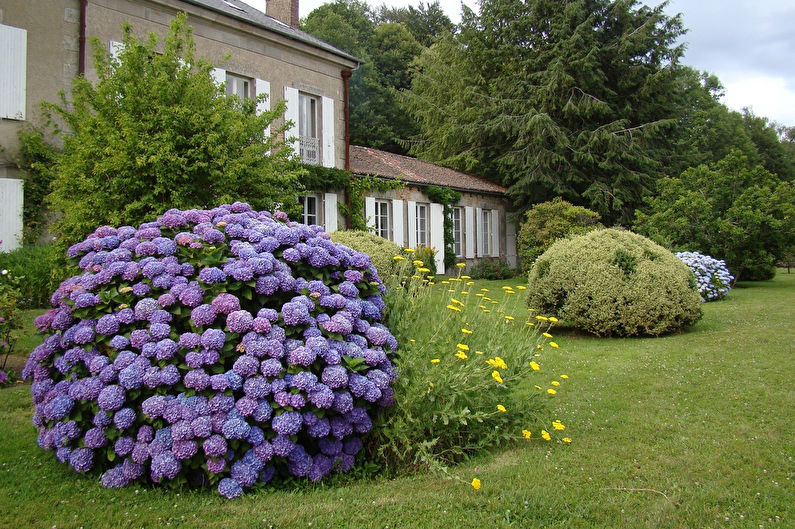
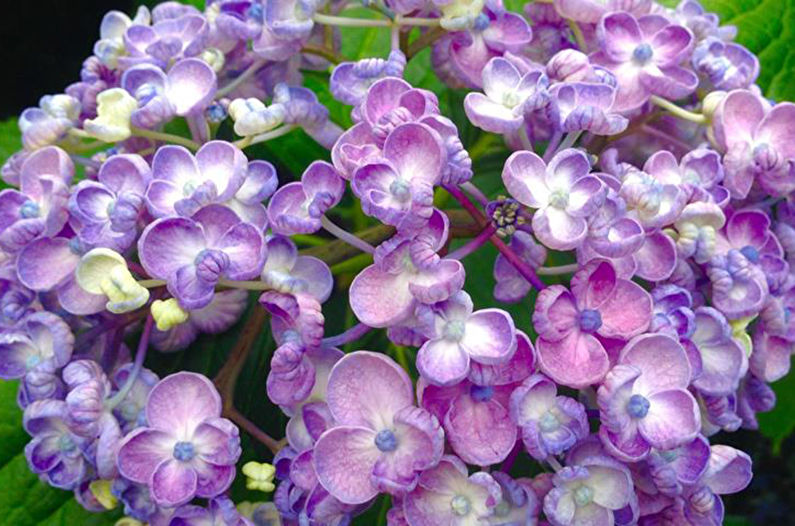
Planting (reproduction) of hydrangeas
There are several ways to propagate hydrangeas - cuttings, dividing the bush and layering. If there was no such plant on the site before, you will need to buy ready-made seedlings. It is best to start in the spring, so that the flower has time to take root well in the first year, without the threat of frost.
A hole 30x30x30 cm is prepared for the seedling, it is covered with a mixture of turf land, peat and sand, followed by mineral fertilizers. If necessary, the dried tips of the roots can be slightly shortened. It is not necessary to fill the root neck with earth. After planting, a young plant needs moderate but regular watering.
Cuttings are suitable only for large-leaf hydrangea, since it is the most compact. For this purpose, in the fall (October-early November), the parent bush is transplanted from the street into a pot and left in a cold place (from 0 to + 2C). From January, the temperature around the plant should rise to + 10C. In February, cuttings ripen on the shoots, from which the lower leaves are removed, the cut is treated with a growth stimulant and planted on this side in a nutritious soil mixture, covered with a jar or a bottle on top to create a greenhouse effect. After rooting, the stalk can be moved to a permanent place.
Young annual shoots root by layering, digging them into the ground in autumn without separation from the bush. Above, you need to leave the apex at least 20 cm long. After 5-6 months, the process is cut off from the mother plant and transplanted.
The division of the bush is also carried out in spring or autumn, with each part must have strong roots. The sowing method of reproduction is rarely used, mainly breeders are engaged in this. It takes 2 years to grow hydrangea from seeds to a seedling.
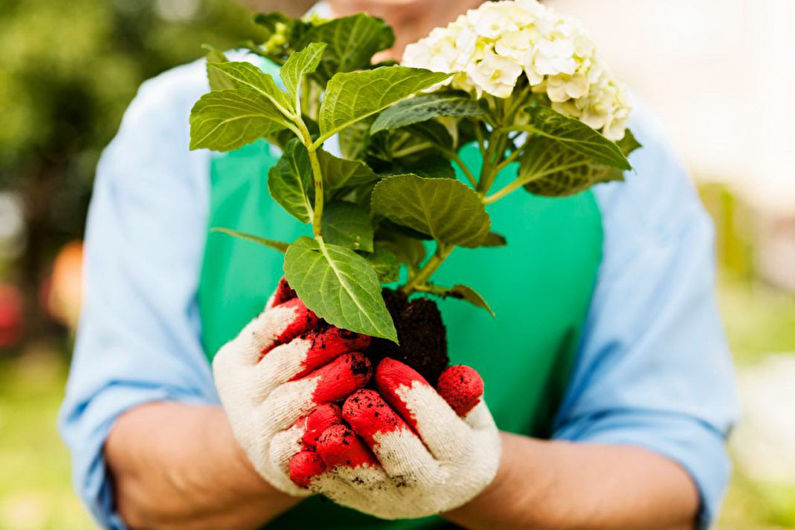
How to care for hydrangea?
Being a perennial shrub, hydrangea well tolerates weather changes, resistant to pests, diseases. Even after a little freezing, its vegetative system is quickly restored. Of course, like most cultivated plants, hydrangeas require timely gentle care. Many varieties for the winter should be covered with mulch or dug and stored in the basement. But in the end, hydrangea generously repays for its attention with truly royal beauty and record long flowering.
Lighting
In order for hydrangea to develop normally, it is necessary to provide good lighting in the morning and evening hours. At the same time, the bush should be protected from the scorching dining sun by a shadow falling from a tree, hedge or building corners. In open areas, it is advisable to choose the east or west side.
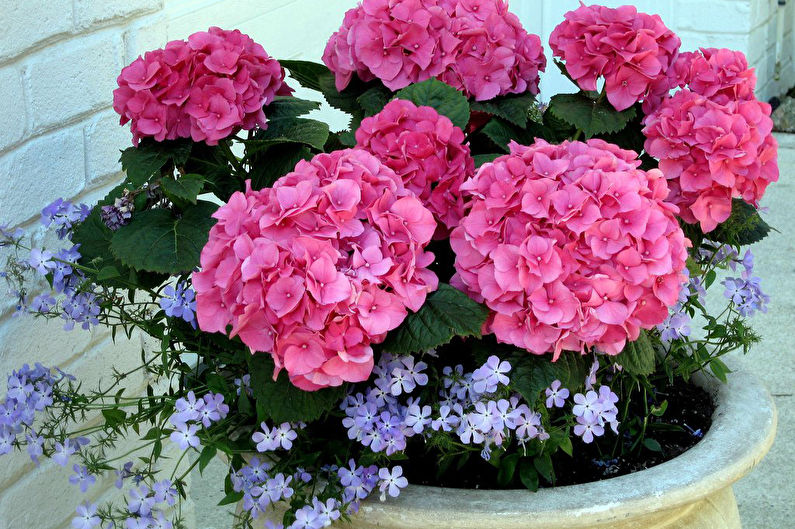
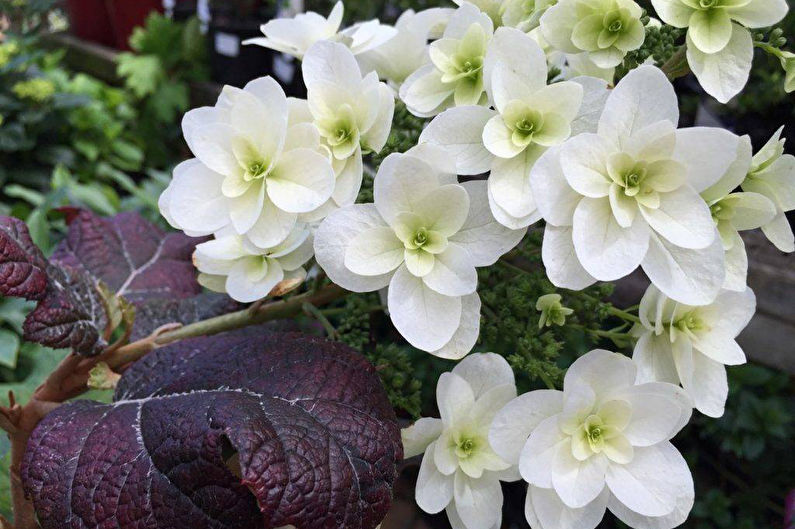
Watering
The official name for hydrangea - Hydrangea - indicates the hydrophilicity of this plant. This means that the ground beneath it should always remain moist, but not too much. For irrigation, settled or filtered water at room temperature is suitable, without any admixture of lime. In hot weather, or if the room with the flower has dry air, it should be moistened by spraying water from a spray bottle.
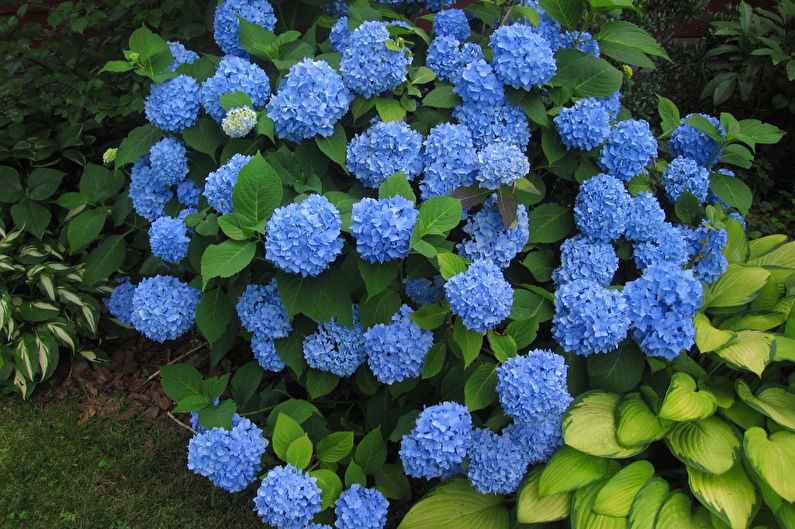
Fertilizers
Hydrangea is fed with minerals only in the summer, during flowering, and ends in mid-August. For this purpose, 40 g of superphosphate + 30 g of ammonium nitrate and potassium sulfate are mixed, the powder is dissolved in a bucket of water and the ornamental plant is watered twice a week.
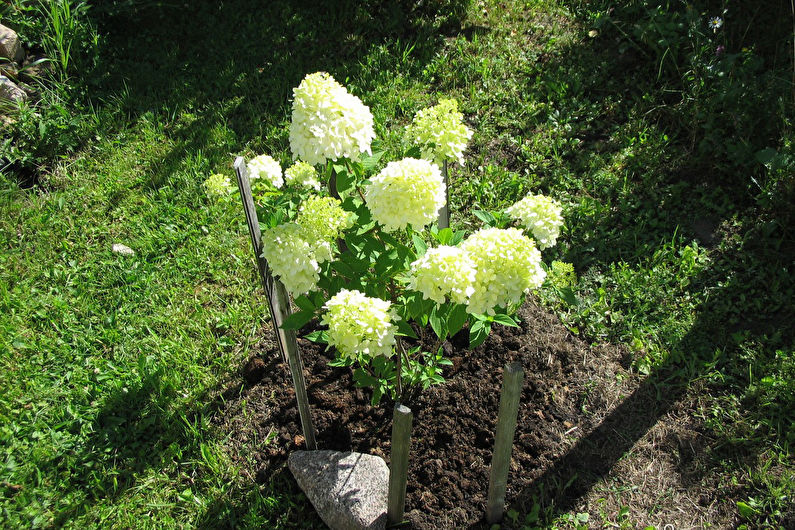
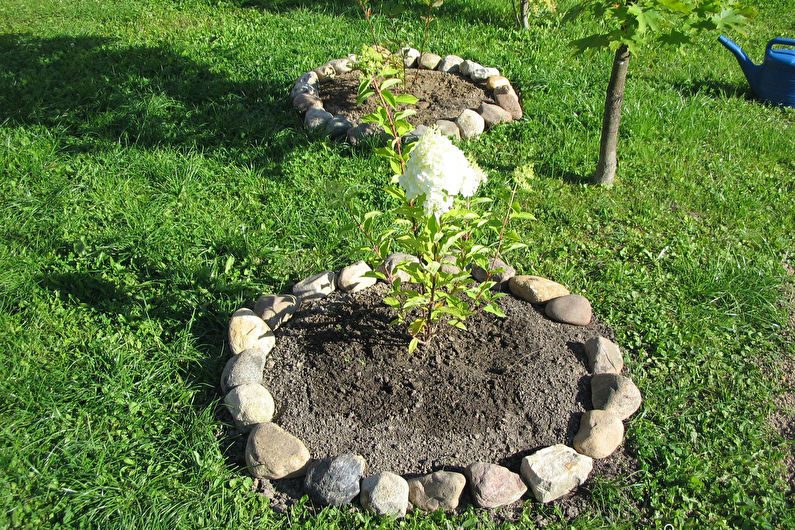
Pruning
Depending on the method of formation of future flowers, hydrangeas are divided into two groups. The first includes almost all large-leaved varieties, petiolate (climbing), oak-leaved and prickly. They have flower buds formed at the ends of last year's branches. For this reason, pruning is preferably carried out in the spring, when both new buds and dry, dead parts, which should be removed, are clearly visible.
The second category is a tree-like and panicled hydrangea.In this case, the laying of future flowers occurs on new branches, and all last year’s just need to be cut, leaving only one pair of buds. This procedure will contribute to the rejuvenation of the plant and the appearance of large, beautiful inflorescences. The right time for a haircut is from the end of February to the beginning of March.
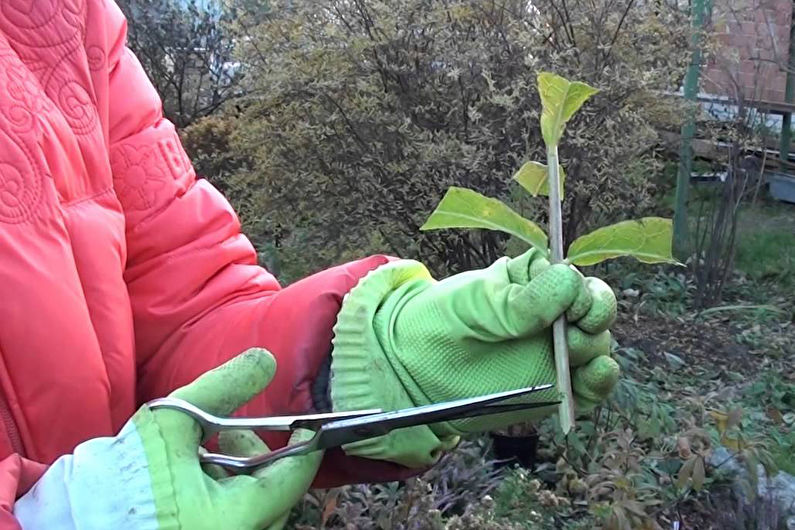
The effect of soil acidity on hydrangea coloration
Although many varieties of hydrangea have their own specific color, its intensity, as well as the unique play of colors, largely depends on the acid-base balance of the soil under a particular plant. The introduction of certain elements into the soil makes it possible to adjust the shades.
Under the influence of an acidic environment, the petals become violet-blue, alkali gives them a reddish-pink tone, and the neutral base is pastel cream or beige.
To obtain a blue color, experienced gardeners water the hydrangea with a solution of aluminum sulfate (15 g / l). Additionally, horse peat, mulch from spruce and pine are introduced. For a houseplant, you can purchase a ready-made acidic substrate (for conifers and rhododendrons).
To add brightness to pink, lime, chalk, dolomite flour are mixed into the ground. When growing room hydrangea the color of the morning dawn, it is better to choose a universal peat mixture without any fillers.

Hydrangea - photo
Hydrangea is a bright, voluminous and delicate plant that can be settled in the house or planted on the site. She is quite unpretentious in leaving, and following simple tricks will give her an incredible color. More photos and interesting solutions for a country house - in our photo selection. Enjoy watching!
